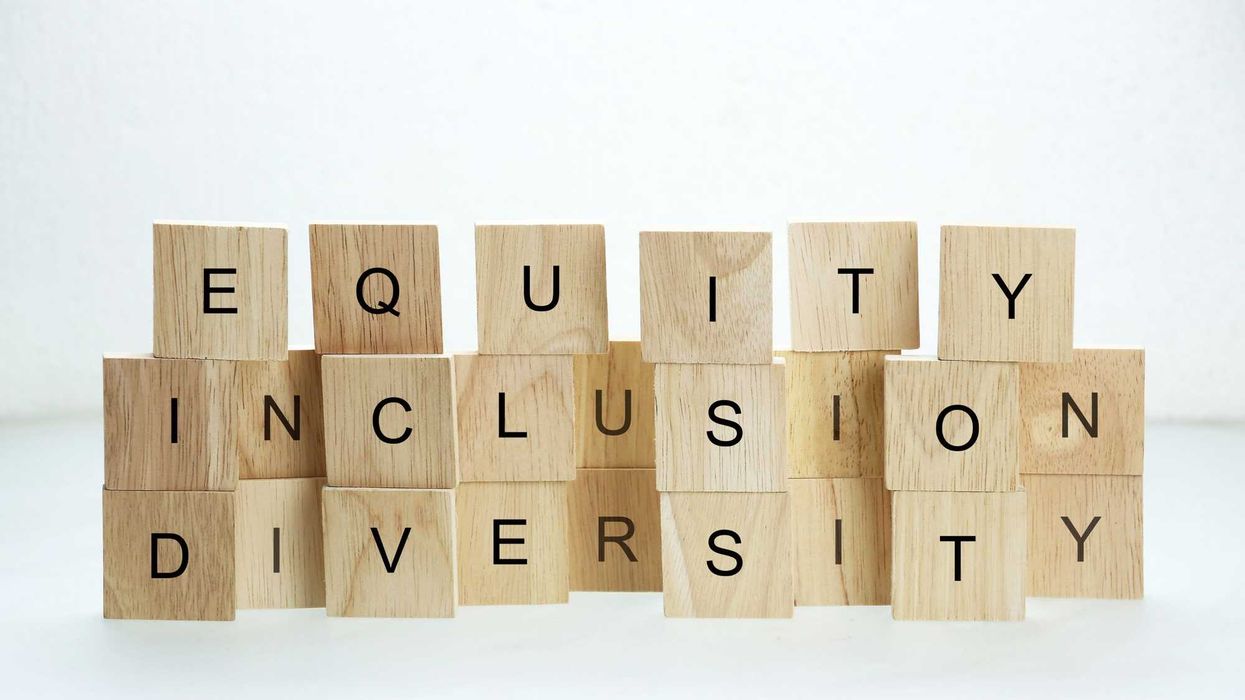The Fulcrum strives to approach news stories with an open mind and skepticism, looking to present our readers with a broad spectrum of viewpoints through diligent research and critical thinking. As best as we can, we work to remove personal bias from our reporting and seek a variety of perspectives in both our news gathering and selection of opinion pieces.
However, before our readers can analyze varying viewpoints, they must have the facts.
In the last three weeks, the news has been dominated by the Trump Administration's elimination of diversity, equity, and inclusion initiatives. This writing presents our readers with just the facts on DEI.
QUESTION: What do the initials D, E, and I in DEI mean?
Diversity: This refers to the presence of differences within a given setting. It can include various dimensions such as race, ethnicity, gender, age, sexual orientation, disability, socioeconomic status, and more.
Equity: Equity is about ensuring fair treatment, opportunities, and advancement while striving to identify and eliminate barriers that have prevented the full participation of some groups. It involves leveling the playing field and addressing systemic inequities.
Inclusion: Inclusion refers to creating environments in which any individual or group can feel welcomed, respected, supported, and valued. It’s about ensuring that diverse individuals can fully participate in organizational and societal activities.
QUESTION: Did DEI policies change under the Biden Administration?
The Biden Administration made several changes to DEI (Diversity, Equity, and Inclusion) policies. One of the key changes was the Executive Order 13985, issued on Biden's first day in office, which aimed to advance racial equity and support for underserved communities through the federal government. This order led to the creation of Equity Action Plans by federal agencies to detail how they were furthering DEI initiatives.
QUESTION: Did President Trump sign an executive order ending DEI for the Federal Government?:
President Trump signed an executive order on January 22, 2025, to terminate DEI (Diversity, Equity, and Inclusion) programs within the federal government. This order aimed to eliminate what the administration described as "illegal and immoral discrimination programs" and to ensure that federal employment practices, including hiring and promotions, were based solely on merit and individual performance, without considering DEI factors.
The order also directed federal agencies to combat DEI-related discrimination in the private sector and revoked previous executive orders that mandated affirmative action and other DEI initiatives.
QUESTION: Is there any evidence that Federal DEI practices or policies lowered standards?:
There's been a lot of debate around this topic. Critics, including former President Trump, have argued that DEI practices led to lowered standards, particularly in sectors like air traffic control. They claim that DEI initiatives resulted in hiring individuals who didn't meet the necessary qualifications, potentially compromising safety and efficiency.
However, supporters of DEI policies argue that these initiatives are designed to promote fairness and equal opportunity without compromising standards. They emphasize that DEI programs aim to ensure that all individuals, regardless of their background, have a fair chance at employment and advancement.
It's a contentious issue with strong opinions on both sides.
QUESTION: Does a diverse workforce increase productivity?
Research suggests that a diverse workforce can increase productivity. Here are a few key points:
- Broader Range of Ideas: Diverse teams bring together different perspectives, experiences, and ideas, which can lead to more innovative solutions and better decision-making.
- Enhanced Problem-Solving: Teams with diverse members are often better at problem-solving because they can approach challenges from multiple angles.
- Improved Employee Engagement: When employees feel included and valued, they are more likely to be engaged and motivated, which can boost productivity.
- Better Customer Insights: A diverse workforce can better understand and cater to a diverse customer base, leading to improved customer satisfaction and loyalty.
However, it's important to note that the benefits of diversity are maximized when it is well-managed and when inclusive practices are in place to ensure that all employees feel supported and valued.
QUESTION: Which corporations have refused to eliminate DEI policies and which have rescinded DEI policies?
Several major corporations have recently taken different stances on DEI (Diversity, Equity, and Inclusion) policies. Here's a brief overview:
Corporations Refusing to Eliminate DEI Policies:
- Costco: Despite pressure from conservative groups and state attorneys general, Costco's shareholders voted overwhelmingly (98%) to maintain their DEI initiatives.
- Delta Air Lines: Delta's chief legal officer emphasized the airline's commitment to DEI, stating it is critical to their business.
- Cleveland Cavaliers: The NBA team continues to support DEI, believing it uplifts their community.
- Apple: Apple remains committed to DEI, continuing to invest in diversity initiatives.
- Goldman Sachs: The financial giant stands by its DEI programs, emphasizing the benefits of diverse perspectives.
Corporations That Have Rescinded DEI Policies:
- Target: Target announced the discontinuation of its DEI initiatives, citing an evolving external landscape and increased legal threats.
- Walmart: Walmart scaled back its DEI efforts, aiming to reduce potential legal exposure and divisive public opinion.
- Meta (Facebook): Meta has eliminated certain DEI programs related to hiring, training, and supplier selection.
- McDonald's: McDonald's revised its DEI protocols, no longer setting goals for diversity in senior leadership and rebranding its diversity team.
- Amazon: Amazon halted some of its DEI diversity and inclusion plans.
QUESTION: Which state governments have DEI hiring policies?
State governments have taken varied approaches to DEI (Diversity, Equity, and Inclusion) hiring policies. Here's a brief overview:
States Strengthening DEI Protections:
- California: Strengthened pay transparency laws and expanded DEI reporting requirements for large corporations.
- New York: Similar to California, New York has reinforced DEI commitments and reporting requirements.
- Illinois: Introduced mandatory DEI training for public-sector employers and private corporations above a certain employee threshold.
- Washington: Also introduced mandatory DEI training for public-sector employers.
- New Jersey: Enforced supplier diversity programs, requiring state contractors to demonstrate commitments to diverse hiring and business partnerships.
- Massachusetts: Enforced supplier diversity programs similar to New Jersey.
States Restricting DEI Programs:
- Texas: Enacted laws restricting race-based hiring practices and prohibiting mandatory DEI training in public universities and government-funded institutions.
- Florida: Similar to Texas, Florida has passed legislation limiting DEI programs.
- Tennessee: Limited the use of racial and gender-based hiring preferences in corporate settings.
- Georgia: Also limited the use of racial and gender-based hiring preferences.
- Iowa: Barred companies with state contracts from implementing affirmative action requirements beyond federal mandates.
- South Carolina: Similar to Iowa, South Carolina has restricted DEI programs.
The landscape is quite diverse, with some states doubling down on DEI efforts while others are scaling them back.
SUGGESTION: Just the Facts: Trade Deficits
David Nevins is co-publisher of The Fulcrum and co-founder and board chairman of the Bridge Alliance Education Fund.
All data and information were obtained from Copilot, an AI-powered chatbot owned and operated by Microsoft Corporation.




















